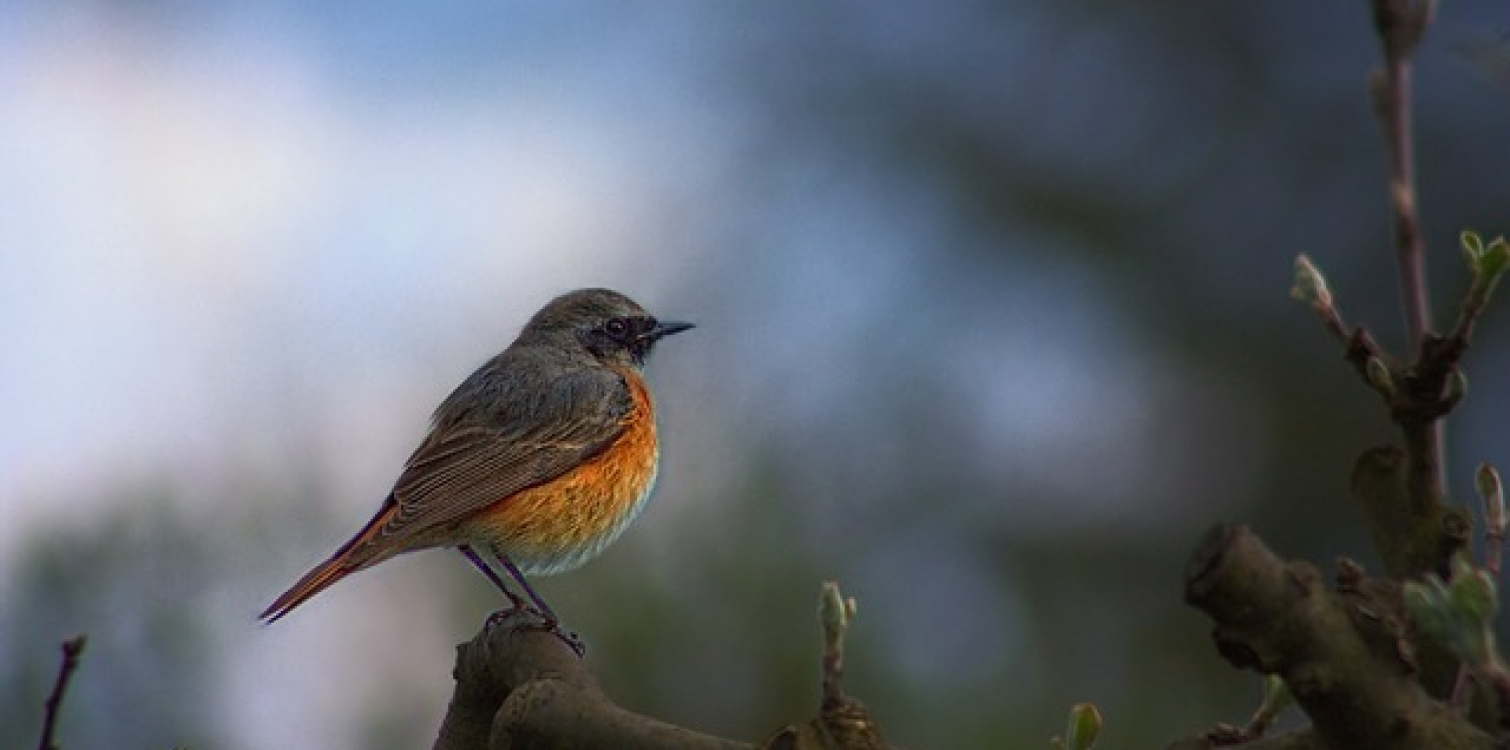
Source: pixabay
Common redstart (Phoenicurus phoenicurus)
| Size |
|
| Weight |
|
| Diet |
|
| Habitat |
|
| Kingdom |
|
| Phylum |
|
| Class |
|
| Order |
|
| Family |
|
| Genus |
|
| Species |
|
Up to 14 centimetres in size, the bird has a wingspan of up to 22 centimetres and is classified as a songbird. It lives in forests and parks, meadows, and especially in high trunk orchards.
- The male is more colourful with white feathers on the forehead and reddish orange feathers on the belly. The female is brown.
It returns from Africa in the second half of April and breeds here in May, June and July. It chooses wall lines, roof edges, tree hollows and nest boxes for its nest. It builds its nest from dry grass and lines it with feathers. It often has two broods per year. The first brood typically contains 5 to 7 eggs, and the second brood up to 5 eggs.
This migratory bird feeds on butterflies and other insects, worms, snails and spiders. In autumn, it also eats berries. It starts migrating back to the south in August.The number of common redstarts in Europe and Slovenia has been declining in recent decades.
- Within the Natura 2000 network, it is densely populated in Kozjansko Park.

Source: pixabay
DID YOU KNOW?
- In the morning, the common redstart is the first to start singing, beginning as early as 4 a.m.
- The name "common redstart" comes from its coloration, which resembles elements of fire: grayish white like ash, black like charcoal, and bright orange like embers and flames.
- In the past, it was a common resident of high trunk orchards in Gorenjska, but as these orchards change, it has become harder for it to find food and nesting sites. You can still find it in old orchards in the Zgornjesavska Valley, between Begunje and Žirovnica, around Bled, and in Bohinj.

